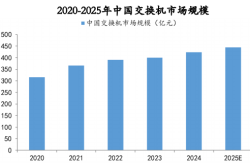O-film, Turning Around
![]() 07/18 2024
07/18 2024
![]() 671
671

After turning a profit in 2023, O-film disclosed on July 9 that it is expected to achieve a net profit of 36 million to 45 million yuan in the first half of the year, continuing its turnaround.
"No winter is insurmountable, no spring will not come. Everything will pass, everything will arrive."
The spring that Cai Rongjun has been longing for seems to have arrived.
After being kicked out of Apple's supply chain, who will be O-film's next major customer? It has been reported that O-film has secured most of the orders for the rear camera, front camera, and fingerprint module of Huawei's Mate 60 series.
Regarding the supply to Huawei phones, due to confidentiality agreements, Cai Rongjun did not respond directly but said, "Stubbornly alive." It seems casual, but in fact, it feels like a light boat has passed through countless mountains.
Judging from the company's increased production lines, mass recruitment in the factory area, and research by professional institutions, it is basically confirmed that O-film is primarily supplying Huawei.
Like Huawei, Cai Rongjun also anticipates a U-turn.
On April 23, 2023, Cai Rongjun pointed out that after experiencing the lowest point in 2022, the company has bottomed out and stabilized in 2023, entering a new stage of development. We must sound the "counterattack horn".
By partnering with Huawei, O-film has "come back to life," which also indirectly confirms its technological strength. Moreover, due to US technology suppression, Huawei phones adopt domestic supply chains, and the related performance improvement will also be highly sustainable.
In terms of lenses, O-film is deeply involved in Huawei's 6P-7P high-end lens projects, and the next-generation 7P products have already been sampled to Huawei. Therefore, O-film modules are likely to remain the primary supplier for next year's new products.
Furthermore, as the consumer electronics industry is in a period of adjustment, parts suppliers have undergone significant shuffling. After weaker competitors exit, the position of leading companies will become more solid.
Additionally, downstream demand is booming, leading to short-term supply shortages of modules such as lenses, and suppliers are also raising prices. An analysis report pointed out that currently, the relevant products of the under-screen optical fingerprint module supplier for Huawei's Mate 60 series have increased in price by 15% to 20%, with some models even increasing by 30%.
With both quantity and price increasing, O-film's chances of a turnaround have significantly risen. The capital market has already reacted first, with the company's share price having six consecutive daily limit-ups, resulting in a direct surge in market value of 15 billion yuan.
After being kicked out by Apple, O-film's performance plummeted.
Furthermore, since 2020, the company's major customer Huawei has seen its mobile phone business fall into a trough due to US suppression. In 2021, Huawei's shipments fell out of the top five globally. Both major customers suffered significant setbacks, and Cai Rongjun faced the darkest moment of his life.
Once a star company, O-film instantly fell to the bottom. Over the three years from 2020 to 2022, O-film lost over 9.7 billion yuan, plus losses in the first half of 2023, totaling over 10 billion yuan in lost revenue.
The secondary market shunned O-film, and its share price fell nearly 80% from its peak; it's worth noting that during its heyday in 2012-2013, its share price surged more than tenfold. From 2012 to the peak in 2017, the share price increase was even more than 21 times, with a market value of over 70 billion yuan at its highest.
Along with the rise and fall of share prices, the wealth of the Cai Rongjun family has also experienced a roller coaster ride. Since 2014, when the company's performance began to rise, the Cai family's wealth expanded from 5 billion yuan to 17.2 billion yuan in 2018.
However, since then, their wealth has declined year after year, falling outside the top 400 rankings, and not even making the top 500 in 2022-2023.
With its ups and downs, twists and turns, O-film is perhaps one of the companies that has endured the most tribulations in the A-share market.
The consumer electronics industry updates and iterates at an extremely fast pace, with each generation of products introducing new technologies and experiences. For companies that fail to bet on trends and make advance layouts, this can be fatal.
In addition, over-reliance on a single major customer, especially within Apple's supply chain, has hurt companies like GoerTek and O-film. Cai Rongjun should have a deep understanding of this now.
It can be said that "surviving" is a topic that industry participants must face, and it is also the main theme of Cai Rongjun's business battles.
Cai Rongjun graduated from the Department of Mechanical and Electrical Engineering at Shantou University, which was funded by Li Ka Shing, who has always been his idol. In 1995, after graduating from university, he joined Kodak Japan and worked his way up from a grassroots technician to a core engineer. Therefore, Cai Rongjun not only has a professional background but also possesses profound scientific research experience.
In 2001, during this period, Hong Kong Xunqi and Shenzhen Zhixiong Electronics jointly established O-film, initially engaged in precision film components for optical fiber communication.
That is to say, Cai Rongjun is not the founder of O-film. Later, O-film invited Cai Rongjun and his brother Cai Gaoxiao to serve as general manager and deputy general manager, respectively, to assist in the company's research and development.
In September 2004, the original shareholders transferred their controlling shares to the Cai brothers for 4.39 million yuan, marking the beginning of the Cai Rongjun era at O-film.
Proficient in optoelectronic technology, the Cai brothers launched infrared filters for O-film two years later, becoming the global leader in this niche market, occupying one-third of the global market share. Leveraging this advantage, O-film successfully listed on the Shenzhen Stock Exchange in August 2010.
However, in the first year after going public, Cai Rongjun sensed a crisis. Although the company's revenue grew significantly that year, its net profit remained stagnant. He soberly realized that the original business had approached its ceiling, with limited room for growth.
At that time, Apple fueled the trend of touchscreen smartphones, and Cai Rongjun keenly perceived the enormous opportunities in the mobile consumer electronics industry. He invested all the funds raised from the IPO into the touch control field.
This strategy was a great success, and Cai Rongjun led the company to surpass TPK, becoming the world's largest touch screen manufacturer. After a brief lull in 2011, O-film's performance shone brightly from 2012 to 2014, with revenue and net profit soaring like a rocket. Its share price even surged more than tenfold in just two years from 2012 to 2013. O-film has since become a significant supplier in the consumer electronics industry.
But the only constant in the high-tech industry is "change" itself. Since then, Apple and Samsung have adopted different touchscreen solutions, intensifying industry shuffling. In 2015, O-film's profits declined again, as its old touchscreen business was squeezed into the low-end market, with increasingly thin profits, and its new business showed no signs of improvement.
At this point, O-film was in a predicament, facing both internal and external challenges.
Then, the micro-camera project that Cai Rongjun got involved in in 2012 stepped up to the plate. As consumer demand for mobile phone photography gradually increased, OEMs correspondingly raised camera order volumes and technical requirements. Cai Rongjun, who had made advance layouts, once again hit the jackpot. At the same time, Cai Rongjun also decided to enter the fingerprint recognition field.
After passing through the trough in 2015, the company reached its second peak in 2016-2017, achieving net profits of 719 million and 823 million yuan, respectively, in those two years. The share price also soared to an all-time high in November 2017.
However, in 2018, due to excessive investment expenses, poor management, and stepping on landmines like LeTV and Gionee, the company suffered a loss of over 500 million yuan after inventory impairments, exposing O-film's internal control issues after years of rapid growth.
Sizing up the situation and learning from failures are important hallmarks of a mature entrepreneur. Cai Rongjun said that he pays more attention to failures than success stories.
The hard blow in 2018 made him focus on carrying out internal management reforms at O-film with "precision and efficiency." That year, the company successfully turned around from a loss to a profit.
But the subsequent story surprised the outside world when Apple tore up the cooperation agreement, giving Cai Rongjun a taste of the cruelty and ruthlessness of business competition. O-film fell from its peak into the mud and was even used as a negative example by outsiders, frequently criticized.
But as he said: Life is a constant repetition of adversity, which no one can escape and will surely arrive. What seems like a terrifying adversity is the source of success. Facing adversity, what we need to do is face it calmly, accept it, and then solve it.
Currently, Huawei is reborn against adversity, and O-film also has the confidence to survive. The company is stepping up efforts and sounding the horn for a counterattack.
Don't forget that as early as the trough in 2015, Cai Rongjun also ventured into the Internet of Vehicles field, raising 1.37 billion yuan the following year to strengthen the research and development of automotive lenses and capture the automotive intelligence business. In the first half of 2023, smart automotive products contributed revenue of 616 million yuan, accounting for nearly 10% of total revenue.
From infrared cut-off filters to touch screens, to micro-cameras and fingerprint recognition, and then to automotive electronics, O-film Technology has kept "tossing and turning." Even in the face of difficulties, Cai Rongjun has not stopped betting on the future.
The development history of O-film is the story of the rise and fall of the consumer electronics industry. However, during the trough period, Cai Rongjun devoted himself to laying out forward-looking technologies, ultimately ushering in a moment of desperate counterattack.
Without years of technological accumulation, this "luck" would not have fallen on O-film.
Disclaimer
The content related to listed companies in this article is based on the author's personal analysis and judgment based on information publicly disclosed by the listed companies in accordance with their legal obligations (including but not limited to interim announcements, periodic reports, and official interaction platforms). The information or opinions in this article do not constitute any investment or other business advice, and Market Value Observation does not assume any responsibility for any actions taken based on this article.








